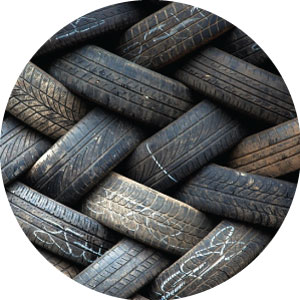Tips To Avoid Tire Blowouts Over The Road
Just about the last thing you ever want to happen when you’re on the road is a tire blowout. At highway speeds, a blowout is far more dangerous than merely “getting a flat.” It can cause your truck to crash. With that in mind, here are some tips to help you avoid costly tire blowouts. (And, yes, you already know these things, but a few timely reminders could save you from a nasty accident.
Know your numbers
 Every tire is loaded with numbers and letters on the sidewall, and each of them has a specific meaning. This is information you need to understand what your tire can – and cannot – do safely and reliably. So let’s review:
Every tire is loaded with numbers and letters on the sidewall, and each of them has a specific meaning. This is information you need to understand what your tire can – and cannot – do safely and reliably. So let’s review:
- The lengthy alphanumeric series that starts with DOT is the tire’s serial number. The final 4 digits, say 2015, indicates the tire was manufactured in the 20th week of 2015.
- The tire’s load range (also called ply rating) is also listed, as a series of three letters. This tells you the tire’s maximum inflation pressure and load limit when inflated to that maximum. Theoretically, the first letter indicates the number of plies used in manufacturing the tire. Plies are measured in pairs (2, 4, 6 … ), with each pair given a letter rating, starting with A. So A would mean 2-ply, and 10-ply would be E. In reality, today’s truck tires are made from newer, stronger materials than a series of cotton plies, so the letter you see actually indicates the tire’s relative strength.
The last letter, likely a G or H, further modifies the tire’s load carry capacity. For instance, an “H” tire can support a greater load at higher inflation pressure than a “G” tire of the same size. Your tire will spell out the MAX. SINGLE LOAD weight @ psi, as measured when the tire is cold. This is for a single axle. The maximum will be lower for dual configurations.
 You can see that load index for single vs. dual configuration. It’s printed in an ova, as “xxx/yyy.” It’s followed by a letter, which indicates the tire’s speed rating. A speed rating of “L” indicates 75 mph, the speed limit on many of our nation’s highways. This is what you’ll see on most North American truck tires.
You can see that load index for single vs. dual configuration. It’s printed in an ova, as “xxx/yyy.” It’s followed by a letter, which indicates the tire’s speed rating. A speed rating of “L” indicates 75 mph, the speed limit on many of our nation’s highways. This is what you’ll see on most North American truck tires.
Don’t exceed the speed limit
Speed rating is important for preventing tire blowouts, because you want the right tire for the job. If you drive mainly long hauls over the interstates at high speeds, you’ll want a tire with a higher speed rating. If you drive a delivery truck around town, not so much.
Rotating tires produce heat, and heat increases inflation pressure. So, if you’re running a maximum recommended load and you’ve inflated your tires to maximum pressure, the pressure will build up and exceed the allowable limit as you travel. And then what happens?
Tire blowouts!
Maintain proper tire pressure
The speed rating printed on your tire is for the inflation pressure indicated. Running your tires under-inflated increases risk because it effectively alters the speed rating. One rule of thumb says that speed rating drops by about one mph for every pound of below the recommended maximum. So, if your tire is down 10 psi, your speed rating is reduced by 10 mph.
Of course, it’s not quite that simple, because you’re carrying a load. You could change tire pressures every time you change loads, but that’s not practical. Experts suggest setting the pressure for the heaviest load you will ever carry. You’ll be more efficient, and you’ll reduce the chance of tire blowouts.

